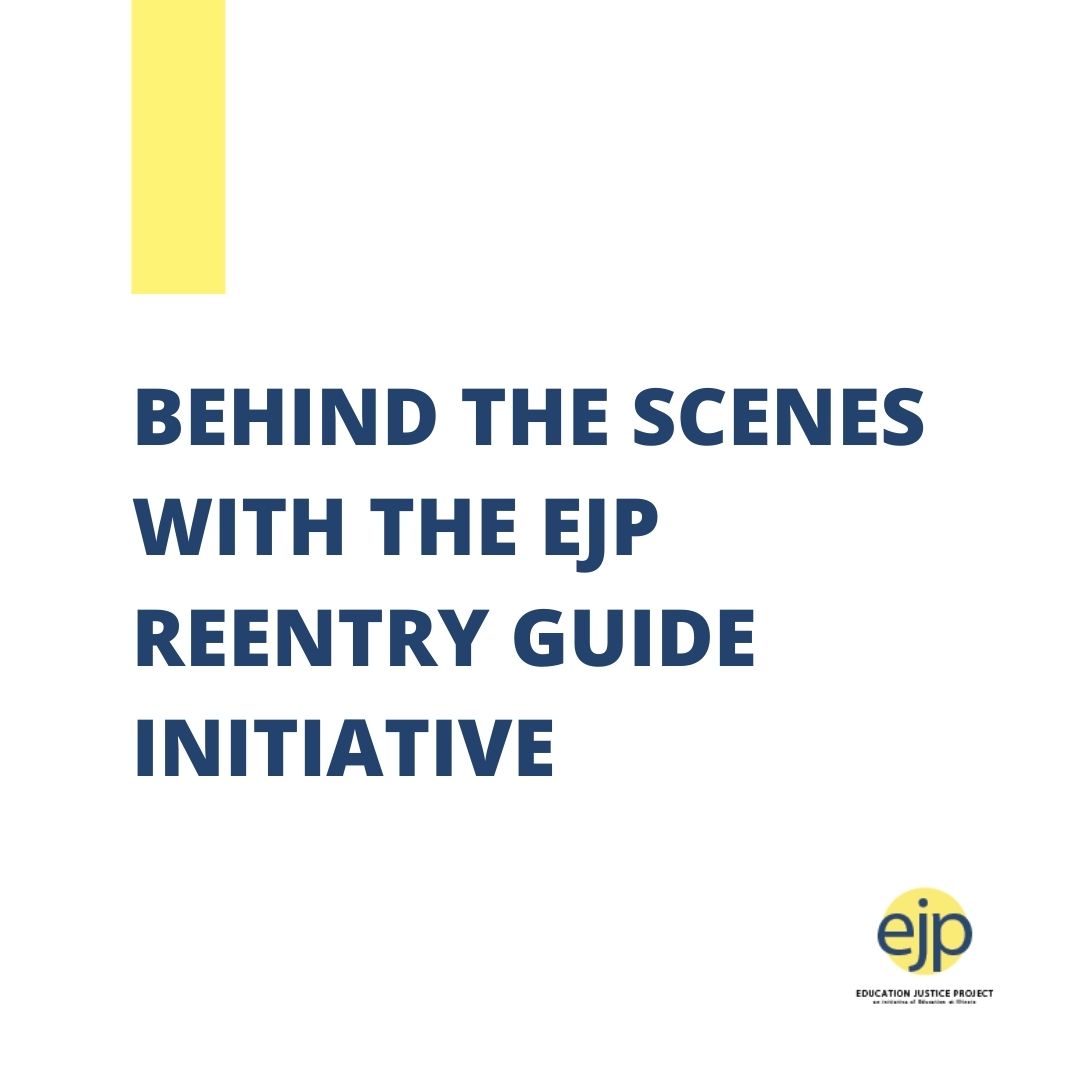The Education Justice Project started the Reentry Guide Initiative to try to answer some of the questions that formerly incarcerated individuals might have when reentering the world after finishing their sentence.
Currently, EJP produces two reentry guides; Mapping Your Future: A Guide to Successful Reentry in Illinois and A New Path: A Guide to the Challenges and Opportunities After Deportation. Each guide includes information about housing, employment, mental and physical health, and more to prepare an individual for a life on the outside.
Mapping Your Future includes information about release during COVID-19, what to prepare before and after reentry, mental health resources, and forms and identifications needed to adjust to their new lives. A New Path includes similar information with the addition of guidance on returning to their country of origin, important resources regarding deportation, and documents necessary for the travel and adjustment.
Both Mapping Your Future and A New Path Hard copies can be requested and downloaded from the EJP website.
Natalia Fic, the EJP Reentry Guide Initiative Distribution Coordinator, says a lot of emotions come with reading the letters from incarcerated folks who write letters to the EJP office requesting guides.
Natalie says that the requests from incarcerated folks begin to pile up and sometimes she feels constrained “sitting in her office, [as they] wait for their voices to be heard.” She says the hardest part is getting letters from people who describe how incarceration has affected them mentally. She says it truly illustrates “how little resources incarcerated people have and how much they rely on the reentry guides for support.”
While it can be challenging to try to fit as much information as possible in these guides, Natalie says she is “so grateful” to work at a place such as EJP. In a country where punitive action and punishment are prevalent, Natalie says she feels empowered to work alongside those who are passionate about making changes.
And despite the tremendous amount of work that goes into these guides, Natalie and Linda Larson, the RGI Writing and Research Coordinator, have even bigger hopes for the future.
Natalia hopes to reimagine what reentry guides mean for EJP. She says she understands not everyone who requests a guide can easily read and navigate a 200 page book. She hopes to expand the initiative through instructional videos, webinars, reentry guide classes and possibly a national guide template.
Linda says by creating a tool for other states to base their guides on, EJP can reach audiences they would not have been able to reach before. Each template would come with information that applies to most people experiencing incarceration and there would be sections that the guide writers can complete based on the resources available in their jurisdiction.
Linda hopes that when states, cities, and other communities request information on how to build their guide, EJP will be able to offer them instructional videos, one-pagers and classes.
Linda also dreams of providing easier access to these vital reentry guides. She plans to expand the EJP directory that is included in every EJP Mapping Your Future Guide to include “need-to-know” information for returning citizens such as guides on employment, education and housing.
Both Linda and Natalia speak of the importance of the RGI advisory council — a group of formerly incarcerated individuals who support and provide valued perspectives on the information going into the guides. They also help recommend organizations, resources and information that can be helpful to include.
The EJP Reentry Guide Initiative is one-of-a-kind because its guides are created by people who possess a vast amount of knowledge, resources and care for the incarcerated people.
EJP continues to transform these guides to benefit those who have experienced incarceration, have community members currently experiencing incarceration and those who wish to be active agents of change.

